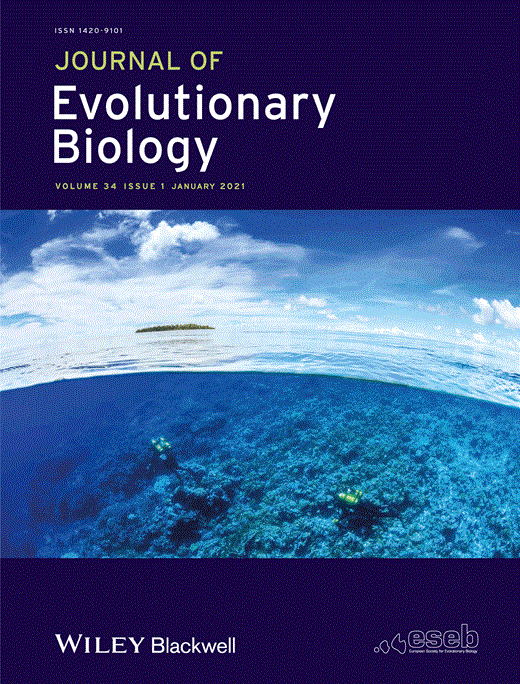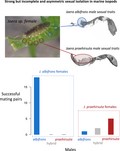-
Views
-
Cite
Cite
Ambre Ribardière, Elsa Pabion, Jérôme Coudret, Claire Daguin‐Thiébaut, Céline Houbin, Stéphane Loisel, Sébastien Henry, Thomas Broquet, Sexual isolation with and without ecological isolation in marine isopods Jaera albifrons and J. praehirsuta, Journal of Evolutionary Biology, Volume 34, Issue 1, 1 January 2021, Pages 33–48, https://doi.org/10.1111/jeb.13559
Close - Share Icon Share
Abstract
Sexual barriers associated with mate choice are often found to be associated with some level of ecological isolation between species. The independence and relative strength of sexual isolation are thus difficult to assess. Here, we take advantage of a pair of marine isopod species (Jaera albifrons and J. praehirsuta) that show sexual isolation and coexist in populations where they share the same microhabitat or not (i.e. without or with ecological isolation). We estimated the strength of sexual isolation between J. albifrons and J. praehirsuta using no‐choice trials and a multiple‐choice experimental population. We found that sexual isolation is strong in both the presence and the absence of ecological isolation, but that it is asymmetric and fails to prevent interspecific gene flow entirely. First‐generation intrinsic post‐zygotic barriers were low, and there was no sexual isolation within J. praehirsuta across habitats. The J. albifrons/J. praehirsuta species pair thus provides an example where the role of sexual isolation as a barrier to gene flow (a) does not depend upon current ecological isolation, (b) seems to have evolved independently of local ecological conditions, but (c) is insufficient to complete speciation entirely on its own.
Abstract






